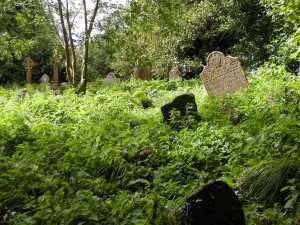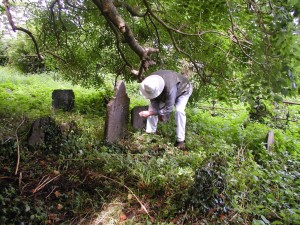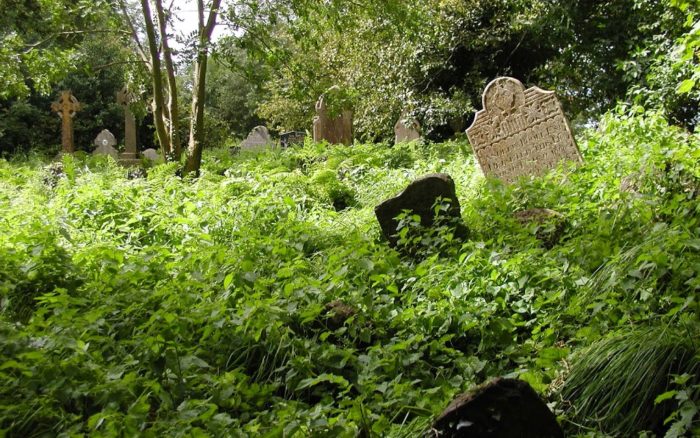 |
| Balleymoney, Ireland |
Biodynamic Compost Prep 504: Stinging Nettle: Vitality
When Donald and I traveled to Ireland to trace my family lineage, we visited cemeteries in which we had to wade through stinging nettle so tall that it was waist deep in places. There was a certain irritation in having to do so! Stinging nettle gets its name from the sting of contact with the formic acid on the tiny hairs of the stem and leaves, the tips also loaded with silica. It seems appropriate that in this resting place of my ancestors, nettles flourish. Nettles, after all, enhance life force, bringing connection to astrality, thereby assisting in the transformation of the old into new form.
 |
| Donald searching for “Damery”. |
In his essay, “Paracelsus as a Spiritual Phenomenon”, C. G. Jung discusses the alchemical coniunctio in the spring. “When this separation [of Sol and Saturn] is completed and the body has been purified… and freed of Saturnine melancholy, then the coniunctio can take place with the long-living inner, or astral man” (Collected Works 13, p. 153). It is a time of gathering “Aniada”, also defined as “fruits and powers of paradise and heaven…those things which by thought, judgment, and imagination promote longevity in us (alchemist Ruland, Lexicon, p. 30. See Jung’s bibliography). Jung postulates that gathering the Aniada could also be “gathering together of all the psychic powers for the great transformation”, or the union with the soul, which can occur only after a purification, or release from “Saturnine melancholy”, a process that is often the business of analytic work.
Jung underscores another quote in this passage from Paracelsus: “And the exaltations of the nettles burn too, and the colour of the little flame sparkles and shines” (CW 13, p. 155). Jung reminds those of us who have lost contact with the properties and use of herbs that for medicinal purposes, nettles were gathered in May, when they were “young” and stung the most. May is the month of Taurus, ruled by Venus, and lust. Paracelsus says this “power” (of lust?) can be “changed into something else” (CW 13, p. 155).
Might that “something else” be Eros? A love of the Earth, a joi de vivre, and a coniunctio with vitality that opens one into the world of spirit? This does not happen at just any time, as each process has its season, but in “May”, after the melancholy and coldness of winter, and the release from it.
Nettle has long been used as a tonic, being loaded with minerals and beta-carotene, flavanoids, and vitamin K, but it is also an excellent detoxifier and diuretic. Emotionally, it can help people who feel “stung” by life circumstances, and are thereby bitter, angry, and cold (Deb Soule, “Herbalist’s Perspective of the Biodynamic Preparation Herbs,” Biodynamics: Working for Social Renewal Through Agriculture, Spring 2004, No. 248, p.46).
For me, I most remember Stinging Nettle as flourishing in the resting place of my Irish ancestors. There is so much vitality there, the soil, rich and moist. It is the fertility of the ground of my being, that place in all of us in which a conjunctio may occur.
